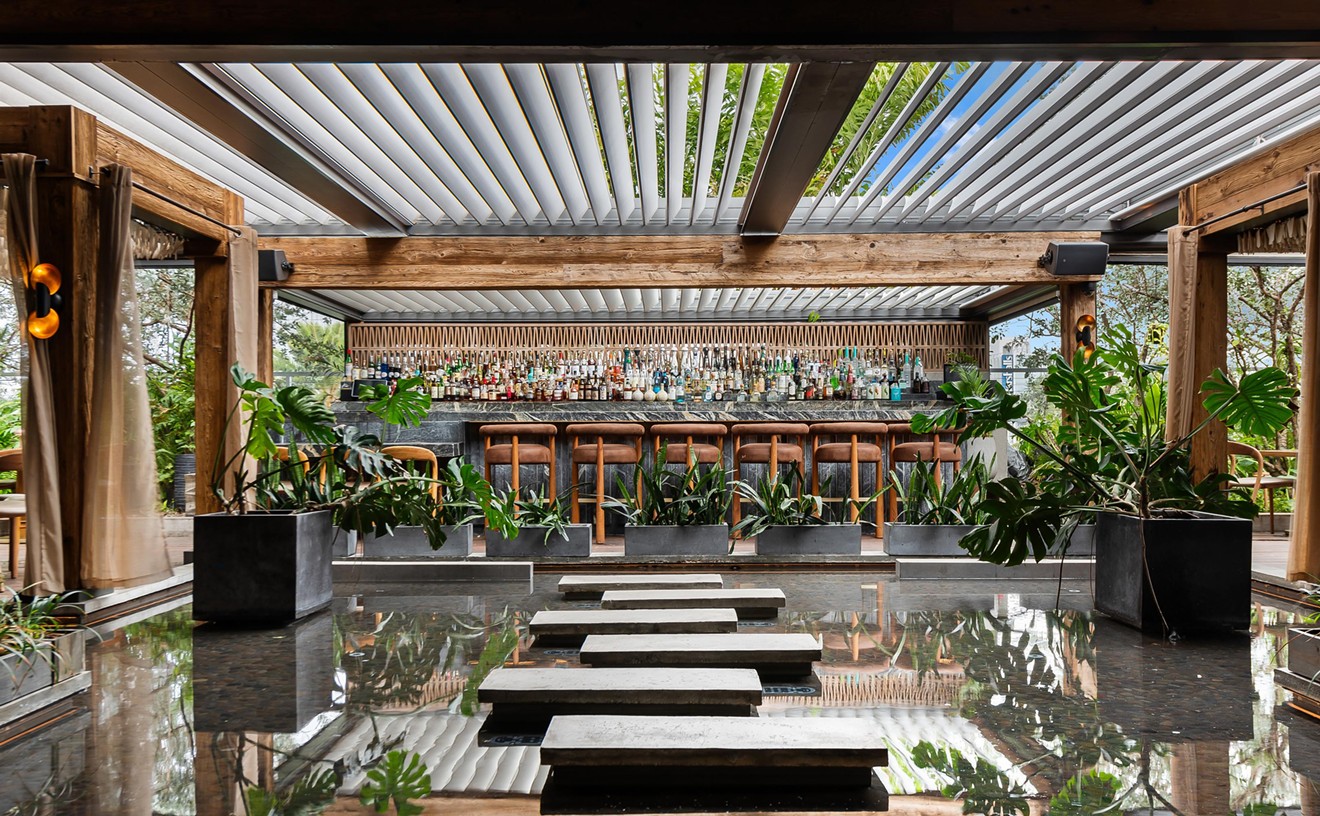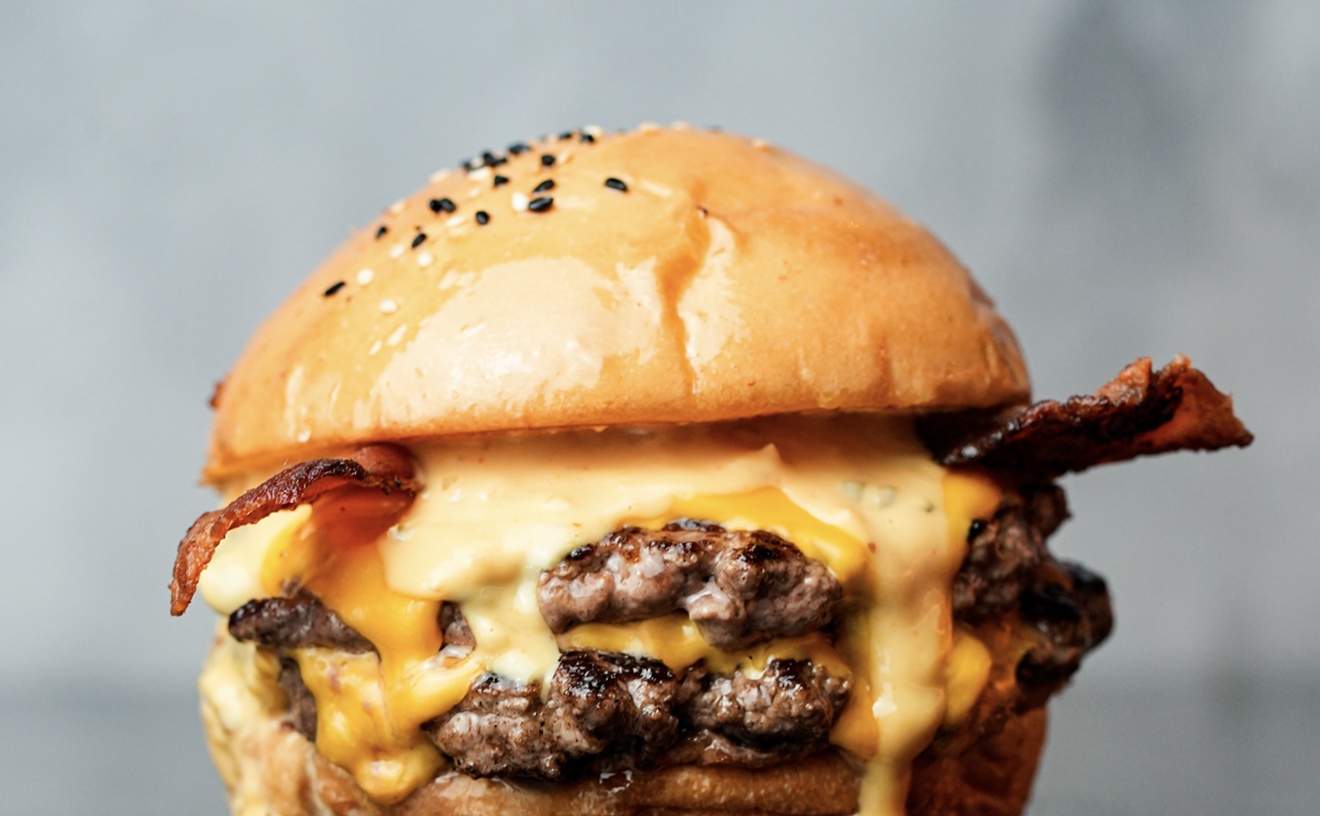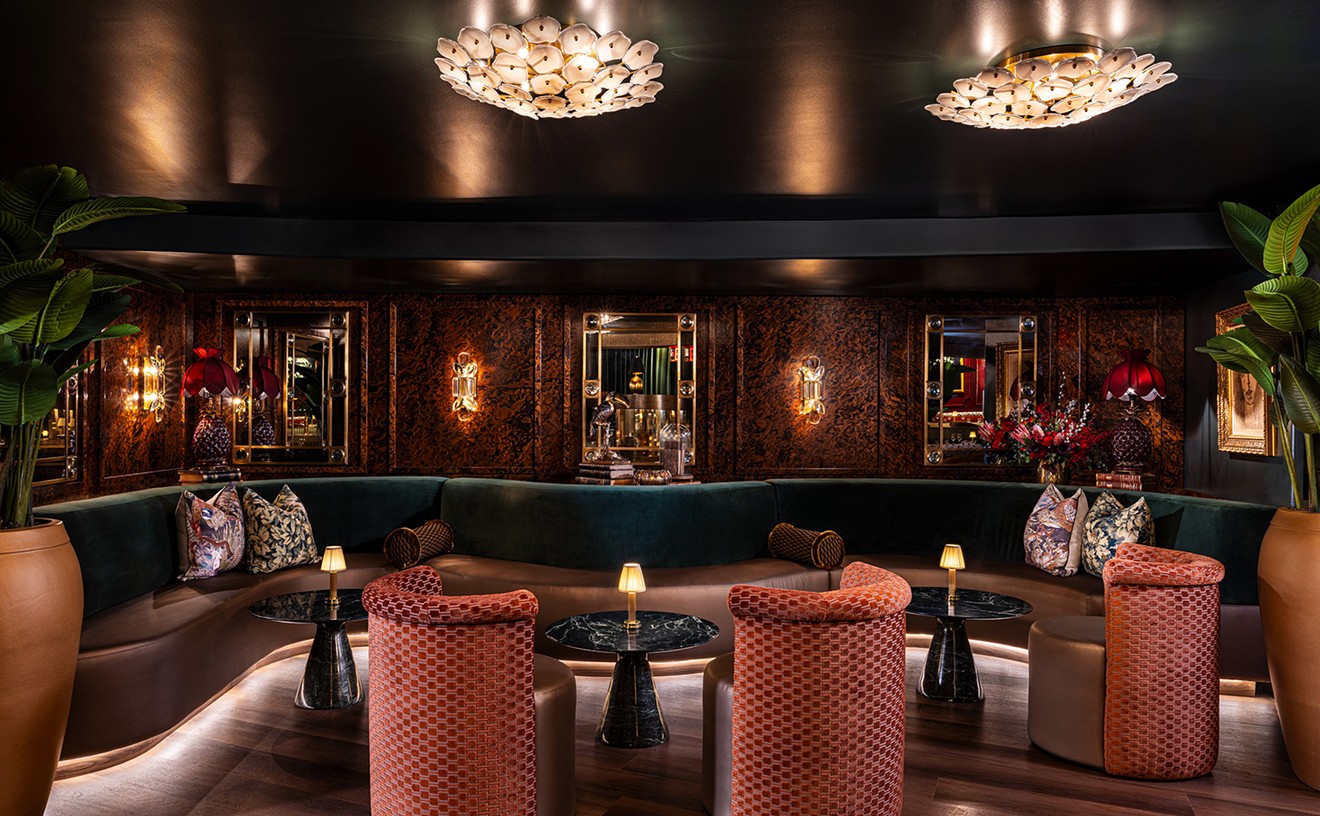The unmistakable snapping of rice in a superheated stone bowl hints at what's to come. The heavy gray-and-white-flecked basin typical of Japanese eateries seems misplaced at first in a Peruvian restaurant. But the nutty, charred scent of crisping grains soon dispenses any concerns about eating a Korean-Japanese mashup of sweet soy, roast pork, Chinese sausage, and pickled ginger.
A black-clad waiter bows and sets the yawning vessel in the middle of a table facing floor-to-ceiling sliding glass doors that open to views of Brickell's condo canyons. He punches through the pale-yellow egg crepe hiding the sweet-smoky combination. With two large serving spoons, he scrapes the almost burned sushi rice stuck to the bottom of the bowl, dispersing its delicious crunch into each bite. It's neither a ceviche nor a taxi-yellow plate of papas a la huancaína. But it's still distinctly Peruvian.
"The Japanese really changed Peruvian food," says Diego Oka, executive chef of Peruvian culinary ambassador Gastón Acurio's La Mar, which opened this past March inside the Mandarin Oriental on Brickell Key. "They taught us how to eat fish raw, how to cut it, how to clean it, and how to eat it right at that moment to tell what it is and whether it's fresh."
When diplomatic relations between Peru and Japan opened in the late 19th Century, thousands of Japanese from that country's southern islands left for the mountainous nation on South America's Pacific Coast. A century later, Japanese culinary traditions are so tightly braided into Peru's that the Andean nation's modified nigiri and sushi rolls are commonplace on menus around the world. The tender ceviche of today is starkly different from its first iteration decades ago, when it was prepared more than a dozen hours before it would be eaten to allow the lime juice's acid to kill any lingering bacteria. "It had the texture of wet paper," Oka says.
Oka was born to Japanese parents who themselves were children of immigrants who had crossed the Pacific. Oka's grandfather immigrated to Peru in the 1940s and sold Salonpas, a pain cream similar to Icy Hot, to make ends meet.
Over the past decade, Oka has traveled the world to help open many of the three dozen restaurants Acurio has established in a dozen countries. The Brickell Key restaurant is his first in Miami, following American outposts in San Francisco, New York, and Chicago. The shaggy-headed chef is widely credited with helping put ceviche, an iconic Peruvian creation, on a global stage in the mid-2000s.
At La Mar, a square ash-gray bowl filled with a punchy classic ceviche — studded with soft chunks of sweet potato and toothsome kernels of giant corn — offers firm, nearly translucent, uniformly sized slices of fluke in a bright-yellow lime bath with a generous helping of the ground Peruvian yellow pepper ají amarillo. Another holds perfect, gem-like cubes of velvety, ruby-red tuna and crisp cucumber disks with sesame oil and toasted nori emboldening the lime juice wash.
Though the two may appear identical to other ceviche dishes around Miami, they're not. The fish is cut with such precision and the tart, lime-based leche de tigre is balanced with such a deft hand it's clear the cooks working in near silence at the open raw bar and grill are held to a higher standard.
Even the humble potato is executed with careful attention. The starchy tuber is a centerpiece of Peruvian cuisine thanks to the thousands of Andean varieties that grow in the foothills and slopes of the 4,300-mile-long mountain range. Moist, Ping-Pong-ball-size purple potatoes are slathered in a rich, cheesy huancaína sauce that's fragrant with ají amarillo and tongue-tickling spices.
Almost every facet of La Mar smacks of a fantasyland where fine-dining finesse marries immaculate executions of Peruvian flavors. After guests descend a long staircase from the Mandarin's incense-scented lobby, a host in a tailored suit sporting a geometrically perfect Windsor knot whisks them to tables in a wood-wrapped dining room. It's warmly lit by constellations of tiny lights hanging almost magically among the crystals of a wavy chandelier. Low-slung tables are surrounded by bright-teal-banded chairs that, along with the water views, continually tie the otherwise blocky, square-edged room to the sea. As the sun slips below the horizon, the soundtrack effortlessly fades from happy hour's thumping minimal techno to a percussive salsa rhythm that's upbeat without being burdensome.
Service flows just as smoothly. One waiter rushes to pull chairs out from under shiny, wood-grained tables as guests are seated. Later, another server easily dissects unfamiliar preparations and ingredients into relatable flavors and offers suggestions beyond the priciest choices.
As a variety of small plates rolls out of the split kitchens, it becomes difficult to tell where the Peruvian influences stop and the Japanese ones begin. Causa de olivo, another classic Peruvian dish with a Japanese-Peruvian slant, brings two luscious cylinders of Idaho potatoes steamed to preserve their moisture and then whipped with canola oil and ají amarillo. Atop each sits a rich yet tart purple-white combination of octopus, mayonnaise, Peruvian olives called botija, red onions, olive oil, and lime juice.
"This doesn't have any Japanese techniques or ingredients but was created by a Peruvian-Japanese chef named Rosita Yimura," Oka says, referring to a famed Lima restaurateur whose eponymous eatery is famed for its Nikkei menu, which melds Peruvian and Japanese cooking styles.
A trio of nigiri offerings showcases La Mar's smooth combination of Japanese and Peruvian flavors and techniques. Two thumb-size balls of aggressively vinegared sushi rice are topped with slivers of fried sweet potato for texture and well-seasoned, briefly grilled slices of yellowtail, creating a crunchy hot-cold bite that surpasses your neighborhood sushi bar's most decadent selections. The sushi bar also steals a dab of the smoky anticucho sauce, which cooks over a coconut-charcoal-burning grill and is glazed onto char-grilled beef hearts, prawns, and octopus. A pair of skewered chicken thighs is cooked to the perfect point, when the dark, fatty meat is still juicy but not undercooked. They're also slicked with a bit of the anticucho sauce, which balances out each delectable bite.
A sweet-savory dessert of fried sweet potato and squash fritters called picarones is crisp outside but moist and custard-like inside. Paired with a spiced syrup made with molasses, it's a fine choice for those who often avoid sweets.
At La Mar, balance is consistent. A smooth shift in music as night falls, a smart combination of refined Peruvian classics and New World-inspired creations, and uncommonly attentive service make each bite worth the premium that Acurio and the Mandarin charge for their services.
Where Acurio and his team succeed most, though, is in their aim of spreading Peru's culinary tradition around the globe. La Mar is the ideal place for the homesick Peruano looking to share his passion for his homeland's food with a squeamish friend who lacks the sophistication to see past a rundown, no-frills restaurant. It won't be long before they're in Lima on vacation diving face-first into a street stand offering cuy — grilled guinea pig — or its own local version of ceviche.










